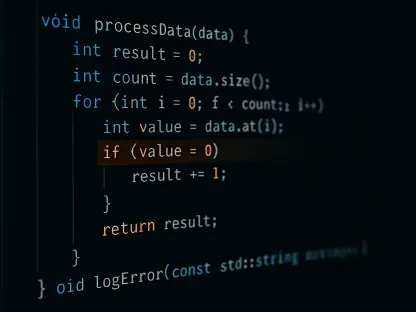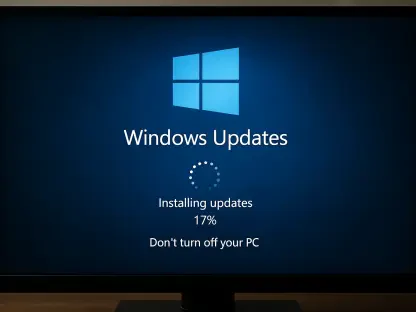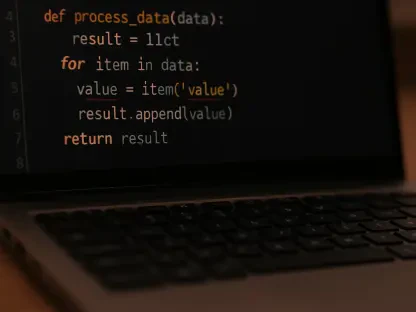Effective threat intelligence gathering is paramount for cybersecurity analysts aiming to protect their organizations from evolving cyber threats. A well-informed understanding of the current threat landscape can make all the difference in thwarting potential attacks. Cyber analysts employ several methods to collect and analyze threat data, providing a comprehensive view of malicious activities. Utilizing a combination of techniques ensures that analysts can stay one step ahead of threat actors, understanding their behaviors and preparing robust defenses against potential attacks. Here are five key techniques that enhance threat investigations and strengthen cybersecurity measures.
Pivoting on C2 IP Addresses to Pinpoint Malware
Pivoting on command and control (C2) IP addresses used by malware is a crucial technique for analysts looking to uncover malicious infrastructure. This method involves using initial indicators, such as IP addresses revealed by security alerts, to find additional contextual information about a threat. By leveraging threat intelligence databases with robust search capabilities, analysts can trace the malicious infrastructure and tools associated with threat actors, thereby gaining deeper insights into the threats they face.
For example, using Threat Intelligence Lookup from ANY.RUN, analysts can execute searches with over 40 different query parameters. By querying an IP address known to be linked with malware, such as 162[.]254[.]34[.]31, they can uncover details about its association with the AgentTesla malware. This includes information on related domains, port usage, and triggered IDS rules, providing a clearer picture of the malicious activities. The ability to view and rerun sandbox sessions where the IP was detected allows analysts to gather further insights into the attack’s context and scope.
This process is instrumental in building a comprehensive understanding of threat actors’ infrastructure. It enables cybersecurity teams to preemptively shut down malicious operations and safeguard their networks from future attacks. The ability to derive critical insights from initial indicators and expand the investigation scope ensures that analysts can proactively defend against sophisticated cyber threats.
Using URLs to Expose Threat Actors’ Infrastructure
Analyzing domains and subdomains through URLs is another vital technique used by cyber analysts to uncover critical information about the infrastructure used for malware distribution and phishing attacks. Threat actors often utilize phishing sites that mimic legitimate websites to deceive users into providing sensitive information, making URL analysis a crucial tactic in the cybersecurity arsenal. By examining these URLs, analysts can identify malicious patterns and detect broader infrastructures employed by cybercriminals.
When scrutinizing threats like the Lumma malware, known for utilizing URLs ending in “.shop,” analysts can use ANY.RUN’s TI Lookup to query these indicators. By doing so, they can pinpoint recent domains involved in Lumma’s campaigns and gain a better understanding of the threat actors’ infrastructure. This level of detailed analysis helps in identifying patterns and enables early detection of phishing sites, allowing organizations to implement stronger preventive measures.
Uncovering the infrastructure of threat actors through URL analysis also facilitates the identification of related malicious activities. For example, analysts might find that certain domains are repeatedly used in various campaigns, indicating a persistent threat. By monitoring these domains and their associated activities, cybersecurity teams can anticipate and mitigate potential attacks, improving their overall threat response strategy. The ability to link different components of an attack campaign through URL analysis significantly enhances an organization’s ability to prevent and respond to cyber threats effectively.
Identifying Threats by Specific MITRE TTPs
The MITRE ATT&CK framework is an invaluable resource that details adversary tactics, techniques, and procedures (TTPs). Utilizing specific TTPs in threat investigations helps analysts discover emerging threats and enrich an organization’s readiness against potential attacks. This systematic approach allows cybersecurity professionals to focus on concrete adversary behaviors and enhance their defensive strategies accordingly.
ANY.RUN provides a live ranking of the most popular TTPs detected across malware and phishing samples analyzed in its sandbox. For instance, tackling T1552.001, which involves credential storage in files, allows analysts to identify sessions matching these activities by pairing the TTP with a detection rule like “Steals credentials from Web Browsers.” This focused method not only aids in proactive threat intelligence gathering but also deepens insights into adversaries’ actual modus operandi.
The integration of TTPs in threat investigations supports a comprehensive understanding of how cybercriminals operate. This knowledge is crucial for developing targeted defenses and improving an organization’s overall security posture. By focusing on specific tactics and techniques used by adversaries, analysts can anticipate potential attack vectors and implement measures to mitigate them effectively. Ultimately, leveraging the MITRE ATT&CK framework enables cybersecurity teams to stay ahead of evolving threats and maintain robust defenses.
Collecting Samples with YARA Rules
YARA is a powerful tool used for creating descriptions of malware families based on textual or binary patterns, facilitating the automation of malware detection. Analysts utilize YARA rules to identify known malware and spot new variants with similar traits, significantly enhancing their threat detection capabilities. ANY.RUN’s TI Lookup features a YARA Search capability that supports uploading, editing, and storing custom rules to find relevant samples, making it an indispensable resource for cybersecurity teams.
For example, a YARA rule designed to detect XenoRAT, a malware known for remote control and data theft, aids analysts in uncovering the latest samples. The tool not only identifies files matching the rule but also links them to relevant sandbox sessions, providing additional context for thorough analysis. This comprehensive approach allows analysts to gather in-depth information about the malware, its behavior, and its impact on targeted systems.
Using YARA rules streamlines the detection process, enabling analysts to efficiently identify and evaluate both known and emerging malware threats. This automation is crucial for managing the vast amounts of data generated in threat investigations and ensuring timely and accurate detection. By incorporating YARA rules into their workflows, cybersecurity teams can enhance their threat intelligence efforts and maintain a proactive stance against cyber threats.
Discovering Malware with Command Line Artifacts and Process Names
Identifying malware through command line artifacts and process names is a unique yet effective technique for uncovering sophisticated threats. Many threat intelligence sources lack the granularity required to capture such details, making tools like ANY.RUN’s sandbox, which records data from live sessions, particularly valuable for analysts. By examining command line data, processes, registry modifications, and other components recorded during malware execution, analysts can extract comprehensive insights into malicious activities.
For instance, analyzing the Strela stealer through a specific command line string and the “net.exe” process, and querying for the folder “davwwwroot,” yields numerous relevant samples and events found in sandbox sessions. This level of detail provides analysts with a clearer understanding of the malware’s operational mechanisms and its impact on targeted systems. The ability to dissect these artifacts and processes enhances the overall threat investigation process, allowing cybersecurity teams to develop more effective countermeasures.
The use of command line artifacts and process names in threat investigations supports a more nuanced understanding of how malware operates. This technique complements other methods, such as pivoting on C2 IP addresses and using YARA rules, providing a multidimensional view of cyber threats. By integrating these diverse analytical approaches, cybersecurity teams can build a more resilient defense against the ever-evolving landscape of cyber threats.
Enhancing Threat Investigations with ANY.RUN’s Threat Intelligence Lookup
ANY.RUN’s Threat Intelligence Lookup is a powerful tool that significantly boosts the quality and speed of threat investigations. By sourcing threat intelligence from samples uploaded by over 500,000 researchers worldwide, this tool supports searches across more than 40 parameters, offering unparalleled insights into malicious activities. Integrating this tool into security workflows allows organizations to enhance their threat research efforts, gain real-time insights, and proactively guard against emerging threats.
The extensive database and advanced search capabilities provided by ANY.RUN make it an indispensable asset in the cybersecurity toolkit. By enabling analysts to conduct comprehensive searches and analyze a wide range of threat indicators, it supports a more informed and proactive approach to threat intelligence gathering. Organizations can utilize this tool to stay ahead of cybercriminals, ensuring robust defenses against potential cyber incidents.
These techniques collectively underscore the essential role of thorough and proactive threat intelligence in modern cybersecurity practices. By leveraging the capabilities of ANY.RUN’s Threat Intelligence Lookup, cybersecurity professionals can enhance their threat investigation capabilities, improve their response strategies, and fortify their defenses against the constantly evolving landscape of cyber threats.
Conclusion
For cybersecurity analysts, gathering effective threat intelligence is crucial to safeguarding their organizations against constantly evolving cyber threats. A thorough comprehension of the current threat landscape is essential in preempting potential attacks. Cyber analysts employ various methods to collect and scrutinize threat data, allowing them to gain a well-rounded perspective on malicious activities.
By leveraging a combination of techniques, analysts can maintain an edge over cybercriminals, anticipating their tactics and fortifying defenses. Understanding the behaviors of threat actors is pivotal in building robust security measures that can withstand sophisticated attacks. Here are five key methods that significantly enhance threat investigations and bolster cybersecurity strategies:
- Open Source Intelligence (OSINT): Analysts gather valuable information from publicly available sources, including social media, forums, and news sites, to identify emerging threats.
- Human Intelligence (HUMINT): Engaging with community experts and industry insiders provides firsthand insights into threat actor behaviors and tactics.
- Technical Intelligence (TECHINT): Analyzing malware samples, network traffic, and system logs to detect and understand malicious activities.
- Threat Feeds and Intelligence Sharing: Collaborating with other organizations and subscribing to threat intelligence feeds allows for the sharing of knowledge about known threats.
- Machine Learning and AI: Utilizing advanced algorithms to detect patterns and predict future threats, enabling faster response times.
Employing these techniques not only ensures a proactive stance against cyber threats but also assists in developing adaptive defense mechanisms that evolve with the threat landscape.









